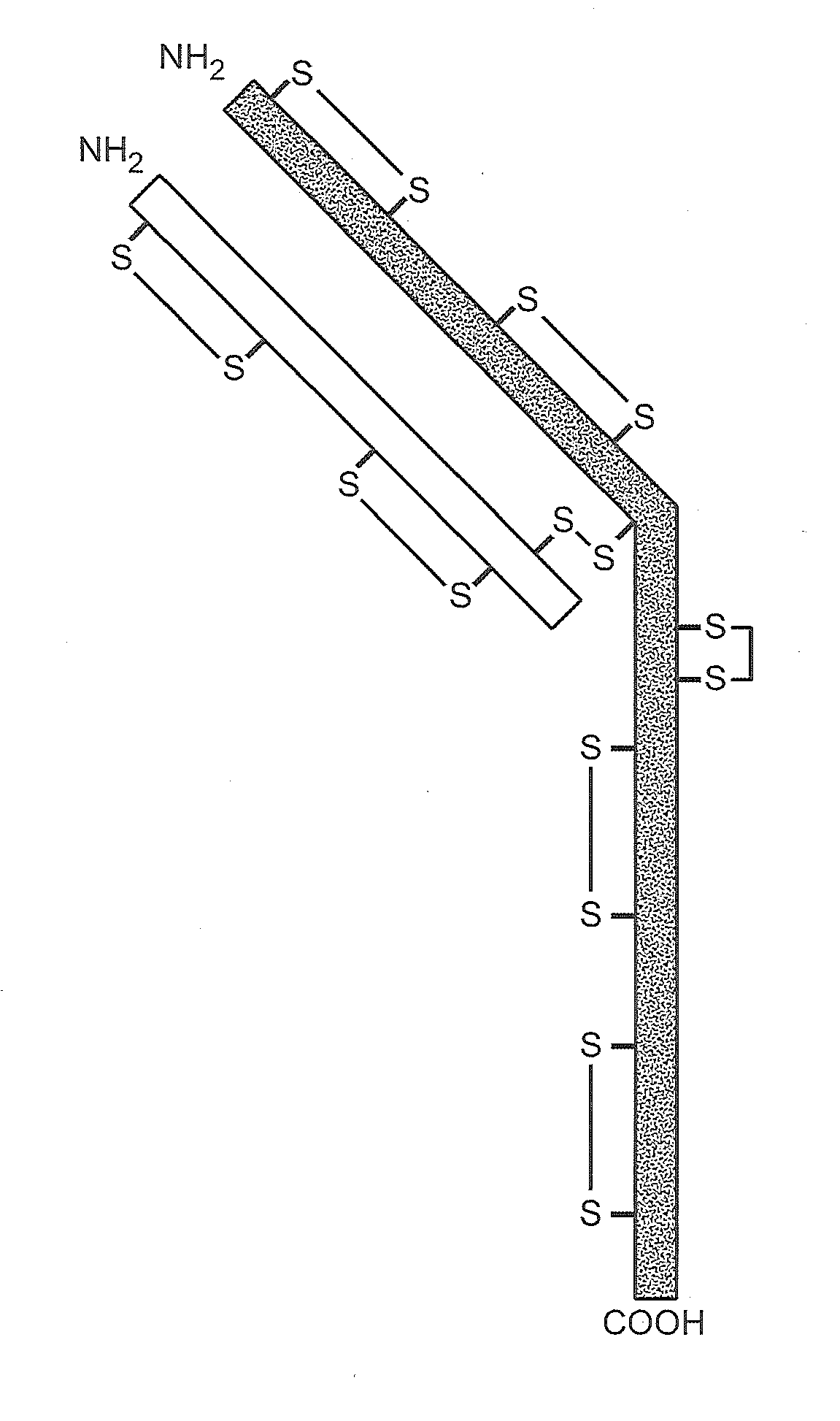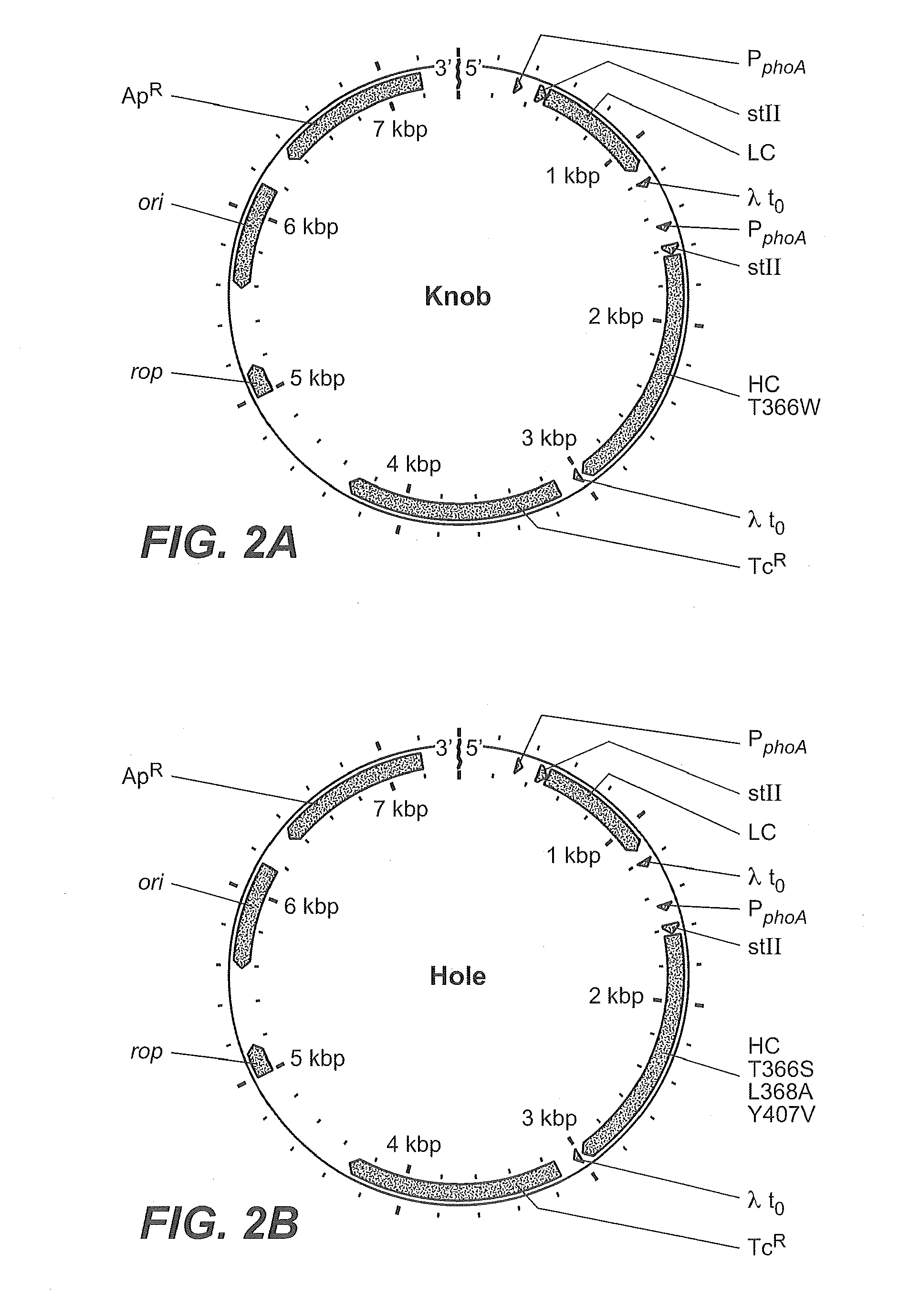Production of Heteromultimeric Proteins
a technology of heteromultimeric proteins and protein, applied in the direction of antibody medical ingredients, pharmaceutical active ingredients, immunological disorders, etc., can solve the problems of reducing yield, reducing/elimination of effector functions, and producing a mixture of products, so as to reduce yield, reduce effector functions, and produce heteromultimeric proteins efficiently and at high levels
- Summary
- Abstract
- Description
- Claims
- Application Information
AI Technical Summary
Benefits of technology
Problems solved by technology
Method used
Image
Examples
example 1
Construction of Expression Vectors
[0384]This example illustrates the nucleic acid construct used to transform host cells.
[0385]Generally, both the heavy and light chain DNA coding sequences were cloned into an expression plasmid that contained separate promoter elements for each of the sequences and antibiotic resistance for selection of bacterial cells that contain the expression plasmid. The vector constructs also encode the heat-stable enterotoxin II (STII) secretion signal (Picken et al., 1983, Infect. Immun. 42:269-275, and Lee et al., 1983, Infect. Immun. 42:264-268) for the export of the antibody polypeptides into the periplasmic space of the bacterial cell. Transcription of each chain is controlled by the phoA promoter (Kikuchi et al., 1981, Nucleic Acids Res., 9:5671-5678) and translational control is provided by previously described STII signal sequence variants of measured relative translational strength , which contain silent codon changes in the translation initiation r...
example 2
Heteromultimeric Protein Production Using Separate Cell Cultures
[0389]The following example shows the production of heteromultimeric proteins when the cells expressing the monomeric components are grown in separate cultures. In this method the cells are grown and induced to express the half-antibody in separate cultures. In one method, the host cell cultures may be combined before protein purification. In another method the components may be purified first and then combined to form the heteromultimeric protein.
[0390]In both methods, a nucleic acid encoding the first hinge-containing polypeptide (e.g., a half-antibody (knob)) is introduced into a first host cell and a nucleic acid encoding the second hinge-containing polypeptide (e.g., a half-antibody (hole)) is introduced into a second host cell. Although this example illustrates the formation of a BsAb one skilled in the art will readily appreciate that the methods described are applicable to any heteromultimeric protein comprising...
example 3
Heteromultimeric Protein Production Using a Single Mixed Cell Culture
[0403]This example illustrates the formation of heteromultimeric proteins from a culture comprising two host cell populations, wherein there is no addition of a reductant in the process.
Method #4—Production of Knob Half-Antibody and Hole Half-Antibody from Different Cell Populations in the Same Culture to Form Intact BsAb without the Addition of Reductant.
[0404]Co-culture experiments were first performed in 0.5 liter shake flasks with two different E. coli transformants containing either a knob or hole half-antibody. For this experiment, a starter culture of both the knob (anti-EGFR) and hole (anti-cMet) half-antibodies were produced by overnight culture in LB-media (100 μg / ml carbenicillin) in 5 mL cultures at 30° C. The overnight cultures of equal OD600 were used to inoculate 500 ml complete CRAP-media (100 μg / ml carbenicillin) in three different ratios (anti-EGFR:anti-cMet; 1.5:1, 1:1 and 1: 1.5) keeping the tot...
PUM
| Property | Measurement | Unit |
|---|---|---|
| Fraction | aaaaa | aaaaa |
| Fraction | aaaaa | aaaaa |
| Volume | aaaaa | aaaaa |
Abstract
Description
Claims
Application Information
 Login to View More
Login to View More - R&D
- Intellectual Property
- Life Sciences
- Materials
- Tech Scout
- Unparalleled Data Quality
- Higher Quality Content
- 60% Fewer Hallucinations
Browse by: Latest US Patents, China's latest patents, Technical Efficacy Thesaurus, Application Domain, Technology Topic, Popular Technical Reports.
© 2025 PatSnap. All rights reserved.Legal|Privacy policy|Modern Slavery Act Transparency Statement|Sitemap|About US| Contact US: help@patsnap.com



